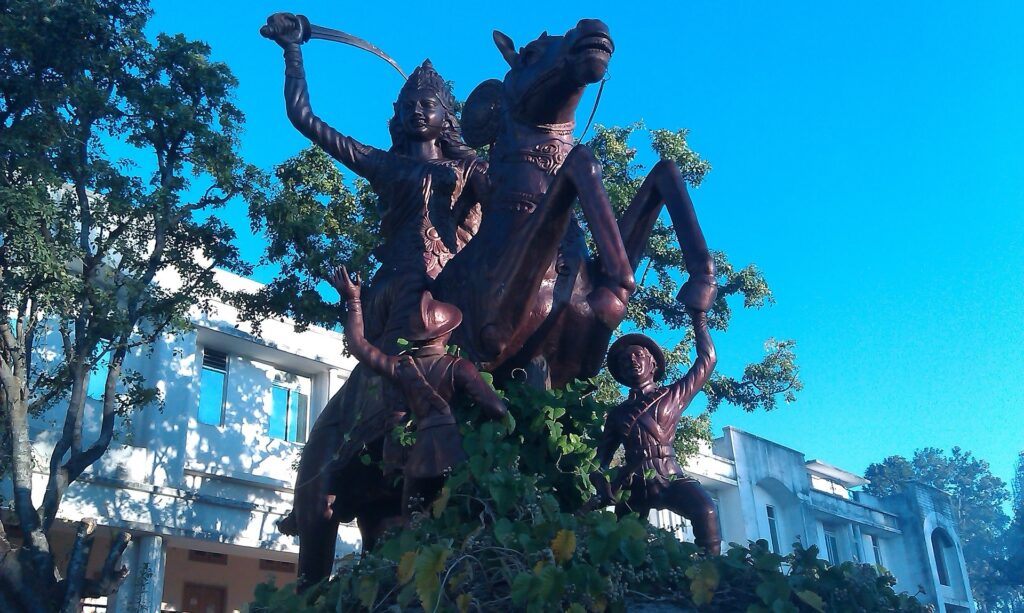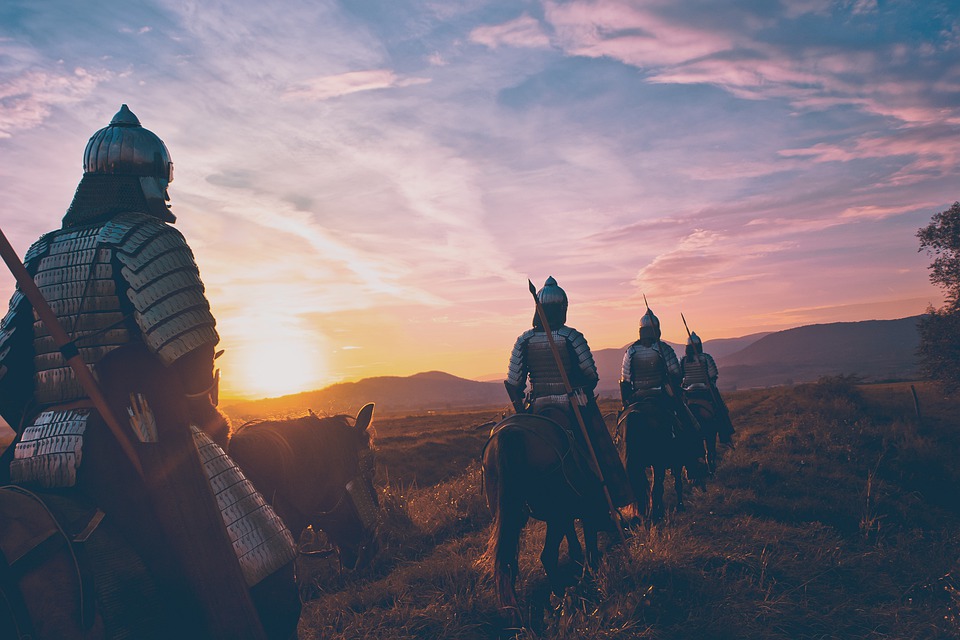
Who was Maharani Laxmi Bai? What are they Great Works in Indian History?
The terrific conqueror of the Indian olden times, Maharani Lakshmi Bai of Jhansi Was likes Joan of Arc of France. They both have so many great individuality in common. The most important of these is that they both struggled and fought hard for fortifying their own countries from slavery and then canonized and declared a saint in 1920.
Lakshmi Bai the Maid of Orleans, both made supreme scarifies for their respective countries and set a glorious example of patriotism and national pride. They two have been a source of much motivation for national honour and relinquish for it all those years. Their suffering has been exceptional and excellent and a subject of much admiration and emulation.
Near the beginning Life Period
Lakshmi Bai was born on November 1, 1835 at Kashi (Varanasi). Her father Moropant Tambe was a highly respected Maharashtrian Brahman. She was called Manno Bai in her babyhood. At what time she was about 3-4 years old her mother died. Therefore, she was brought up by her father alone who taught her horse-riding and material arts besides the three R’s.
After her mother’s death, they had come to Bithoor and were living with Baji Rao. She was not only intellectual and brave but also very gorgeous. She was the childhood companion of Nana Sahib.
Once Nana fell down from his horse and was about to be crushed under the horse’s feet when she showed perfect courage and presence of mind. She jumped down from her own horse and saved Nana Sahib by pulling him out of hazard.
Wedded Living
Bai was married to Raja Gangadhar Rao, the king of Jhansi. He was senior to her by many years in age. Since her marriage she came to be known as Laskhmi Bai, meaning goddess of wealth. After her marriage she began to take keen interests in fine arts and military affairs to the state.
Lakshmi Bai and Raja Gangadhar Rao had a son, but sadly he died early and there was no heir to succeed the throne. Therefore they adopted the Child Anand Raj who was the son of Vasudev Rai the Raja’s brother in a family relation. That Maharaja decreased ill and died on November 20, 1853.
Governor General of India Dalhousie did not recognize this adoption and so planned to take possession of Jhansi under his policy of lapse. It was against the tradition practice of the Hindu law which approved the practice of adoption and recognized adopted sons as legal and lawful heirs to the property and titles of the adoptive fathers.
The refusal to recognize her adoption was totally unjustified and so it infuriated the brave Rani Lakshmi Bai. In the end, her State was added into the British Nation. This clever and dubious move of annexation also annoyed the people in general.
Petitions against Dalhousie
Lakshmi Bai built a couple of petitions against Dalhousie’s false judgment, but they were turned down. She also urged to London, but again it proved an exercise in futility. By 1857 there broke out the first war of Indian Independence, also known as the revolution of 1857. Dalhousie had also annexed some other States on the alleged reason of mis-governance. He regarded the so called mis-governance as a justification for annexing States under the doctrine of lapse.
Revolution of 1857 Began
The rebellion of 1857 started at Meerut on May 10. The actual date fixed for the revolt was May 31, 1857 but it began three weeks ahead because people were so impatient, restive and emotionally charged against the exploitation’s of the British.
It was actually the first war of Indian Independence and had popular support. Soon it spread to Delhi, Lucknow, Kanpur, Allahabad, Punjab, Madhya Bharat and other parts of the country like a wild fire.
Bahadur shah Zafar was declared king and Nana Sahib his Peshwa. The revolt of Jhansi began on June 4, 1857 with of Jhansi Began to June 4, 1857 with the seizure of the company’s treasury and magazine.
Lakshmi Bai brought no time in joining the mutiny and combat for autonomy. She took command of the revolutionary forces and captured the fort June 7, 1857. She once again to began to rule as Regent on behalf of her minor son.

She declared her independence and hoisted the flag of the Mughal Emperor Bahadur Shah Zafar. Thus a huge force under Sir Hugh Rose was sent to regain Jhansi on March 20, 1958. Lakshmi Bai gave a good fight to the British army which was supported by Maharaja Scindia of Gwalior and Raja of Tikamagarh. Lakshmi Bai personally supervised all the war preparations.
She also requested the help of Tantya Tope, who attacking the English troops from the behind. The terrible battle raged almost for a week and both the sides sustained heavy losses. Finally, the Sir Hugh Rose was successful in recapturing the fort, however, not by force but by treachery.
Role of Tantya Topa and Rao Sahib with Lakshmi Bai
Lakshmi Bai escaped from the fort in time with some her loyal followers and fighters and reached Kalpi. There she joined other revolutionary leader like Tantya and Rao Sahib to give another big fight to the opponent. Soon she apprehended the garrison of Gwalior from Jiyaji Rao Scindia.
Scindia wanted the British help and support at Agra. The British were too willing to extend the support and a HughRose. The revolutionaries fought bravely under the Rani for four days against very heavy odds.
Lakshmi Bai herself fought bravely along with her two female attendants, Mandra and Kashi. She clothed as a male captain inflicted large, casualties on Hugh’s forces and finally she was victorious on June 17, 1958.
Rani Lakshmi Bai versus Hugh Rose
Soon there was huge reinforcement to the British troops as General Smith joined Hugh Rose and there ensued again a fierce battle. Rani Lakshmi Bai fought with exemplary courage and valour.
She battle –single-solo till one English Horseman smitten her on the head from the backside and another wounded her breast. Seriously injured and yet she did not lose courage and continued fighting bravely.
She was able to kill both of her assistants before she collapsed and fell down from her horse on the ground. Her dead body was immediately removed from the scene by her loyal attendant Ramchandra Rao and lit the funeral pyre.
She died with a sword in her hand and the enemy could not touch her at all. They day once Maharani Lakshmi Bai died combat for the independence from the outside rule was June 17, 1858 and then she was barely 23 years old.
Life Conclusion of Maharani Lakshmi Bai
There are only a few parallels to Maharani Lakshmi Bai in the world history. No sacrifice was too great for her in the defence of her motherland. Had there been few more heroes and heroines like her, India would have been and independent long before 1947.
Bai was really the bravest of the Brave who later years became a great iconic symbol of national pride and loyalty and inspired Indian patriots and freedom-fighters to lay down their life at the feet of Freedom and Liberty.
There are many cities, markets, institutions etc. named after this courageous heart so-called Maharani Lakshmi Bai. various songs and poems have used written and status set up in her honour and memory.
Lakshmi Bai name and life have been printed in golden letters in the history of India. Ever since her great sacrifice and martyrdom, her example of bravely, courage and military skill has been a great source of inspiration and encouragements to Indian patriotism. Unquestionably she was one of the great leaders of the First War of Indian Independence and the greatest heroines of Indian history.
